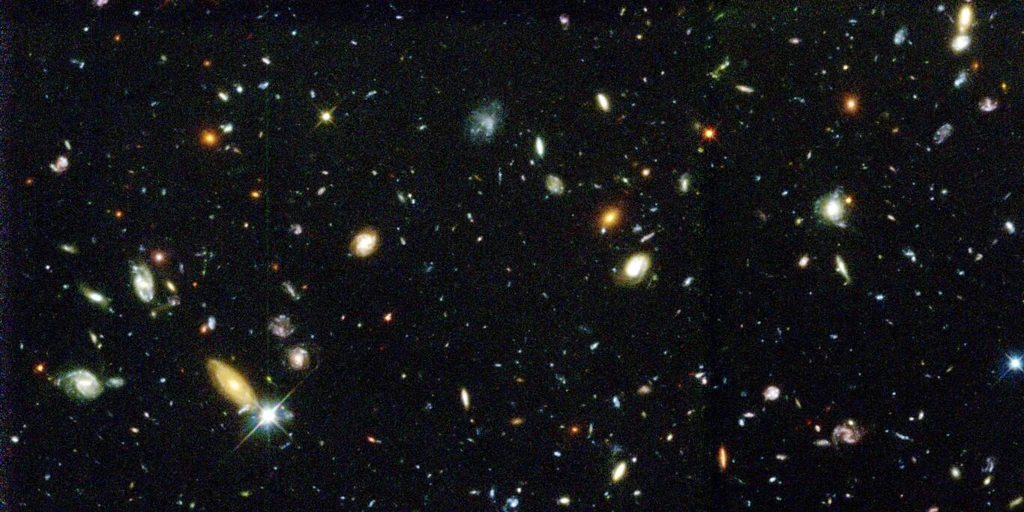This time, the scientists revised their data three times. The least they are trying to do is solve one of the biggest mysteries of cosmology, nothing more, nothing less. The mystery, known as “Hubble tension,” is that the current rate of expansion of the universe is too fast based on its initial conditions. In other words, depending on where we look (and what technology we use), the universe appears to be expanding at different rates. Something impossible according to current theories. For this reason, scientists have been trying to find any errors in the measurements for more than a decade.
But they did not achieve this. Quite the contrary, a team of researchers led by Adam Ries (recipient of the 1998 Nobel Prize in Physics with Saul Perlmutter and Brian Schmidt for discovering dark energy, which is responsible for the expansion of the universe faster than ever before) has confirmed conclusively that there is nothing wrong with previous measurements of global expansion, and the discrepancy is quite real. Hence, it is a fact that the universe is not expanding equally everywhere. Which means that what we know, or thought we knew about its evolution, is incorrect. “Once you eliminate the measurement errors, what remains is the real and exciting possibility that we have misinterpreted the universe,” says Rees. The study was published in “The Astrophysical Journal Letters”.
Two ways, two results
As has been known since Ries' discovery of dark energy, the universe has not only been continuing to expand since the Big Bang, but it is doing so increasingly faster, that is, the speed of this expansion is accelerating. There are currently two ways to calculate the so-called “Hubble constant”, that is, the value of this expansion rate. The first is to examine small fluctuations in the cosmic microwave background, an ancient remnant of the universe's first light that was produced just 380,000 years after the Big Bang.
Between 2009 and 2013, astronomers explored these small differences in depth using the European Space Agency's Planck satellite, and found a value for the Hubble constant of about 67 kilometers per second per megaparsec (one megaparsec equals 3.2 million light-years). Or the same thing, the acceleration of the universe increases by about 73,000 km/h for every million light-years of expansion.
The second method, which is used to measure the expansion in the regions closest to us, relies on observing a type of pulsars called Cepheids. These are stars that have reached the end of their existence, so their outer layers of helium swell and contract as they accumulate or release radiation from the star itself, causing them to periodically “flicker,” like distant bulbs emitting flashes.
As Cepheid stars become brighter, they pulsate more slowly, giving astronomers a way to measure their absolute brightness. Therefore, by comparing this absolute brightness with the observed brightness at each moment, scientists can connect Cepheid stars to form a “cosmic distance ladder” and peer deeper into the universe’s past. This in turn allows them to calculate the exact value of its expansion.
And here the mystery begins, because according to measurements of Cepheid stars made and refined over more than 30 years by Reiss himself and his colleagues with the Hubble Space Telescope, the expansion rate of the universe is about 74 km/s per megaparsec. This is a much higher value than what Planck's measurements show.
The global crisis has broken out
Naturally, the first reaction was to think that this discrepancy in results was not real, but the result of some measurement error, perhaps due to Cepheid stars being inadvertently mixed with other types of stars, or with distant clusters, in observations made by Hubble.
In 2019, a detailed study of the Cepheid stars closest to us revealed that Hubble's data was correct, at least at short distances. Last year, researchers also used the more precise James Webb Space Telescope to confirm whether the “cosmic scale” also operates at greater distances. An initial observation in 2023 confirmed that this was the case, and that Hubble's measurements of the expansion of the universe were accurate. However, some scientists have predicted that we are still encountering “invisible” errors, which are difficult or even impossible to detect, but by also probing the farthest Cepheid stars, they will become increasingly apparent as we look deeper into the universe.
So, building on their previous observations, Rees and his colleagues observed an additional 1,000 Cepheid stars with Webb, in five galaxies up to 130 million light-years away from Earth. After comparing the data with Hubble data, they confirmed that it was also correct.
“Now, we've covered the full scope of what Hubble observed, and we can confidently rule out measurement error as a cause of Hubble fatigue,” Rees says. Combining Webb and Hubble gives us the best of both worlds. “We have found that Hubble's measurements remain reliable as we move forward on the cosmic distance scale.”
In other words: Hubble jitter cannot be attributed to some observational error, but it is something very real and cosmologists will have to learn to live with it. Something screams at us that our view of the universe is wrong, or at the very least incomplete.
Today, the researchers say, it is as if the distance measure observed by Hubble and Webb were firmly anchored to an anchor point on a riverbank, and the Big Bang glow observed by Planck measurements in the early universe was firmly anchored to the other side. . The important point is that we have not yet directly observed how the expansion of the universe changed over the billions of years between these two points. “Now we need to find out if we're missing something in how to connect the beginning of the universe to the present,” Rees concludes.

“Beer enthusiast. Subtly charming alcohol junkie. Wannabe internet buff. Typical pop culture lover.”

:quality(85)/cloudfront-us-east-1.images.arcpublishing.com/infobae/5DDXTCMJZBHZZMM3SZDMT7CNGQ.jpg)


:quality(85)/cloudfront-us-east-1.images.arcpublishing.com/infobae/RHOIDFCETNHXTHUBH7GZNO3WWI.jpg)
:quality(85)/cloudfront-us-east-1.images.arcpublishing.com/infobae/Y65NELVZONDSTJR2YGXD73Q5DM.jpg)

More Stories
The surprising evolution of digital avatars – Juventud Rebelde
The new RPG from the creators of Genshin Impact hasn't been released yet, but it's already a hit. There has never been a HoYoverse game as anticipated as Zenless Zone Zero – Zenless Zone Zero
They discovered a new molecule in space